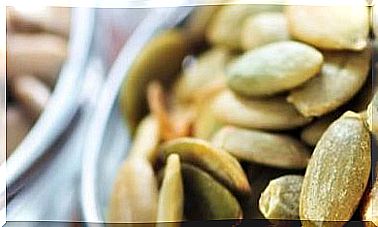How To Fill The Pantry And Freezer For Many Days
If we organize well, we can get supplies that will allow us to eat healthy, varied and rewarding without complicating ourselves too much.

These days, when it is recommended to stay at home and go out alone to make the necessary purchase, it is convenient to take advantage of the trip and fill the pantry and freezer well with long-term products. But I’m not talking about fried and ultra-processed potatoes, but rather basic ingredients that will help you prepare healthy dishes even if you don’t leave home.
1. Fresh fruit and vegetables
It is the thing that deteriorates the fastest, but there are some that last longer and they are the ones that should be bought now. With this list you can enjoy a couple of weeks of fresh vegetables and fruit.
- Apples: last up to 2 months, the ideal is to keep them in a cool place; if we can, in the fridge
- Oranges: last up to 4 weeks in the fridge
- Potatoes: last up to 5 weeks, they need a dark and cool place (otherwise they will germinate)
- Whole pumpkin (not cut pieces): lasts up to 3 months
- Onions: they last up to 2 months stored in a cool and dark place, separated from the potatoes
- Sweet potatoes: last up to 5 weeks
- Beets: we cut the green part and store them in the fridge, they last a couple of weeks
- Cabbage and collard greens: last up to 2 months in the fridge
- Carrots: we cut the green part (which we can take advantage of at the moment to prepare a pesto, make a broth or add to a smoothie, for example) and store them in the fridge for up to 1 month
- Leeks: last up to 1 month in the fridge
- Celery: up to 2 weeks in the fridge
- Lemons: last up to 1 month
- Garlic: the essential of Mediterranean cuisine, lasts up to 2 months in a cool and dark place.
2. Fill the freezer
In the freezer, the food will last from 3 months to a year. We can freeze all kinds of ready-made foods such as legumes and cooked cereals, stews, stews, vegetable burgers, broth, meatballs, muffins, energy bars …
However, at this time we stay more at home and most likely we will have time to cook, and also the freezer space is usually limited, so it is advisable to fill it with basic ingredients and cook fresh food daily.
- Fresh bread: If we can buy fresh whole wheat sourdough bread, it is convenient to buy a few extra loaves and bars and freeze them. The bread freezes well and lasts for about 3 months. The ideal is to freeze it already cut and so we can take only the necessary slices.
- Vegetable: Broccoli, pods, cauliflower, spinach, peas, kale, corn, Brussels sprouts, carrots, etc. All of these vegetables freeze well and keep a few bags in the freezer. We can buy them already frozen or fresh and freeze them ourselves.
To make them last longer (8-10 months) and better maintain their texture, color and flavor, we can blanch them beforehand. In this case, all you need to do is cook the clean and chopped vegetables in water for 1-2 minutes, then transfer them to a bowl of cold water with ice, dry them well and freeze them. Later we can add it to soups and stews, vegetable creams, soups, stews or sauté it.
There are some vegetables that are best frozen raw, such as peppers and onions, which we will cut first.
We can also freeze tomatoes. However, when frozen they change their texture and cannot be enjoyed in salads, but they are suitable for preparing tomato sauce or adding to stews and stews. After taking them out of the freezer, we run them through hot water and peel them (the skin almost falls off) and prepare the sauce as usual. Another option is to cook the sauce beforehand and freeze it.
- Fruit: The fruit such as forest fruits, mango, pineapple, cherries, peaches or nectarines can be found already frozen or we can freeze it (raw and chopped).
In the freezer its texture changes and it is not useful to eat as is, but we can use it to prepare compotes, jams, smoothies or in pastries.
The bananas have a special place in the freezer as they serve for many preparations such as smoothies or ice cream and, above all, can be used to make pastries. We simply have to peel, cut and freeze bananas that are very ripe.
In the smoothies, we add the frozen banana directly, but in pastries, such as in a banana bread or a sponge cake, it is defrosted before.
- Herbs and spices: To dress our dishes we can freeze fresh herbs such as parsley, basil or coriander. It is best to freeze them in ice cubes with a little water. We can also freeze ginger and, when using it, grate it directly on our plates.
- Tofu, tempeh: We can freeze vegetable proteins, although they usually last a few weeks in the fridge. In the case of tofu, the texture is a little different when frozen, since it dries and is more rubbery, but the advantage is that it absorbs the mash better afterwards. And we can prepare it in the oven, sautéed or grilled.
To freeze tofu, you must first dry it well. Ideally, wrap it in kitchen cloths, put a weight on it and leave for about 15 minutes. Then we dry it, cut it (or leave it as is) and freeze it. We can also freeze the silky tofu to prepare a delicious mayonnaise or a cheesecake, for example.
The Tempeh freezes well and can put the freezer in its original packaging.
3. The basics for the pantry
- Whole grain cereals and their derivatives: rice, millet, quinoa, buckwheat, rolled oats, couscous, bulgur, polenta, pasta and breadcrumbs. Cereals provide us with vitamins, minerals and fiber and last a long time. With them we can prepare all kinds of dishes such as salads, Buddha bowls , hamburgers, risottos , porridge … and they should not be missing in our pantry.
- Whole wheat flours : depending on our eating style, it is convenient to have on hand whole wheat flour, spelled, rice, chickpeas, buckwheat, oats, almonds … to prepare crepes, muffins, breads, pancakes, etc.
- Dried and canned legumes : all varieties of legumes are indispensable as a source of protein. Apart from having dried vegetables to cook, it is also convenient to get some cans of cooked vegetables in case we do not feel like cooking or we are in a hurry.
- Nuts and seeds: they are another essential in our healthy pantry. They provide us with protein, fiber, vitamins and minerals (especially selenium and zinc, which are important for the immune system) and have endless uses in the kitchen. It is convenient to have a variety: almonds, hazelnuts, pistachios, walnuts, cashews, sesame, sunflower or pumpkin seeds; in addition to seeds rich in omega 3 such as chia, hemp or flax.
In the event that we have a craving for sweets or to prepare a dessert, we can have different dried fruits such as dates, raisins, figs, dried apricots …
- Nut creams: tahini, peanut butter, almond, cashew, hazelnut … There is a lot of variety and they are very helpful. We can add them to breakfast porridge or yogurt; They are also used to make vinaigrettes, creamy sauces, vegetable patés and cookies; or simply served with fruit for a quick and healthy snack.
Another option is to crush a tablespoon of white almond, cashew or coconut butter cream with water to make a quick vegetable drink.
- Healthy Sweeteners : coconut sugar; panela; maple, coconut or date syrup; stevia ; natural jams; etc. Depending on our eating style, it is convenient to have some sweetener to prepare homemade desserts, since we are going to spend a lot of time at home and food, apart from nourishing us, also has an important role of comfort and pleasure.
- Long-lasting bread : German bread, pita, mold, crackers , pancakes, whole wheat sticks, pizza bases , wraps … This type of bread lasts for weeks and can help us prepare a quick snack, breakfast or dinner. It is not ideal to live on them, but it is convenient to have some for the necessary moments.
- Healthy sweets: Staying home can be psychologically a bit difficult and ideally take it easy. We can have healthy sweets on hand such as dark chocolate, dried fruit, whole grain cookies, energy bars … for some special moment.
- Seasonings: seasonings are essential to prepare a rich plant meal. The basics are tamari (or another soy sauce), mustard, miso , nutritional yeast and different spices such as pepper, curry, cumin, paprika, Provencal herbs, cinnamon, ginger, turmeric …
- Oil: without oil you cannot cook. The basic for all hot and cold salty preparations is extra virgin olive oil. Extra virgin coconut oil can also be useful for pastry dishes, stir-fries, exotic curry-type dishes and even for cosmetic use to hydrate the skin, make hair masks, etc.
- Vinegar: it is another basic and indispensable in the kitchen. It is convenient to have at home some bottles of unpasteurized apple cider vinegar that we can use both for salads and to flavor dishes, but also as a digestive tonic. Other interesting vinegars are that of Modena, that of wine or that of coconut.
- Vegetable milks: the best thing, both for our planet and for our health, is to prepare them at home, but it is always advisable to have some cartons ready. There is a lot of variety (almond, rice, oatmeal, cashew, hemp, coconut …), so everyone can find the one they like best. We just have to take a good look at the ingredients to make sure they do not contain added sugars.
We can also have vegetable cream in the pantry (almond, cashew, oatmeal or rice) to cook.
- Coffee, tea and infusions: depending on our diet, it is advisable to have some packages of coffee, cereal coffee or tea and also some infusions that can help us with digestion (chamomile, fennel, mint), stress and insomnia (lavender, passionflower) or simply to enjoy ( rooibos , fruit infusions …).
- Ingredients for pastry: if we like to make pastries, we have children or we simply want to take advantage of this time to do experiments in the kitchen, it is convenient to have basic ingredients at home to prepare healthy homemade desserts. Apart from the flour, some sweetener and the oil that we have already mentioned, we may need baking yeast or bicarbonate, cocoa or carob powder, vanilla, chocolate chips , cocoa butter …
If we are alone, chances are that we will have more time to cook than before. But if we have children, we can find ourselves in the situation that, since children cannot go out, even though we are at home, we actually have less time because we are going to take care of the little ones, the house and, also, work.
That is why it is also convenient to have some basic preserves to prepare quick dishes. The essential ones are:
- Crushed tomato to make tomato sauces, stews and stews. It is convenient to have several boats at home.
- Canned coconut milk with which we can make a curry in a few minutes or add to pastry dishes, vegetable creams …
- Various cans of pesto with “clean” ingredients to serve with pasta, but also to add to salads, baked vegetables or to flavor tofu. When buying pesto, the ideal is to see if it contains extra virgin olive oil.
- Vegetable patés in glass to prepare a quick snack.
- Olives, corn, asparagus, dried tomatoes and capers to add to salads or to add to other dishes.
Extras for the pantry
Apart from the basics, to make sure that our diet is as nutritious as possible, we can add some extras.
- Seaweed: Seaweed is a nutritional treasure. They are very rich in vitamins and minerals, especially in iodine and omega 3 fatty acids, so we are interested in consuming them if we do not eat fish. In addition, they contain antioxidants and alkalize the body.
The easiest to find are kombu , which should be added to legumes when cooking to make them more digestible; the wakame , we can add to pureed vegetables and salads; and the nori seaweed sheets , which we will need to prepare sushi .
- Superfoods: Superfoods are foods with a high concentration of phytonutrients and antioxidants that have been used for thousands of years and that can help us increase vitality and improve performance.
In addition, depending on each one, they provide other benefits. They can help us balance hormones (such as maca), alkalize the body (such as wheat grass and barley grass), purify the body (such as spirulina and chlorella ), adapt to times of stress (such as ashwagandha and rhodiola ), to strengthen the immune system (such as medicinal mushrooms) or to add antioxidants to the diet (such as açaí or maqui).
- Seeds to germinate: if we are at home without going out, the thing that will run out the soonest is fresh vegetables and fruit. To provide these nutrients and live enzymes, we can make our sprouts at home. In addition, we can consider it as a plan, as something that we can learn.
We can germinate any legume such as lentils, green soybeans, chickpeas …; cereals such as oats, wheat, buckwheat, quinoa …; seeds like sunflower, pumpkin…; ingredients that we have at home. Or we can buy special seeds such as broccoli, Chinese garlic, red cabbage, watercress, alfalfa … and germinate them.
- Fermented – Gut health plays an essential role in a strong immune system. And as at this time this is more essential than ever, it is convenient to add some fermented foods to our diet every day such as unpasteurized kombucha, sauerkraut or kimchi , miso …
Do not miss it…
If you are interested in this topic and want to learn more, you will surely like the healthy nutrition course How to organize the pantry, by María del Mar Jiménez, an expert in healthy and organic eating.









